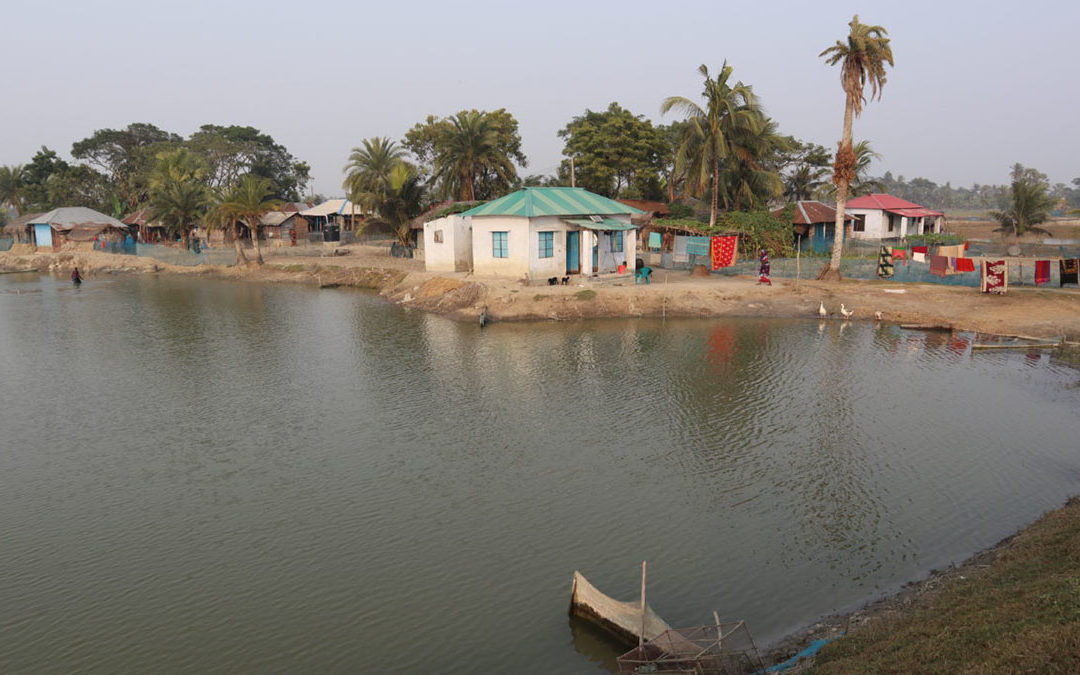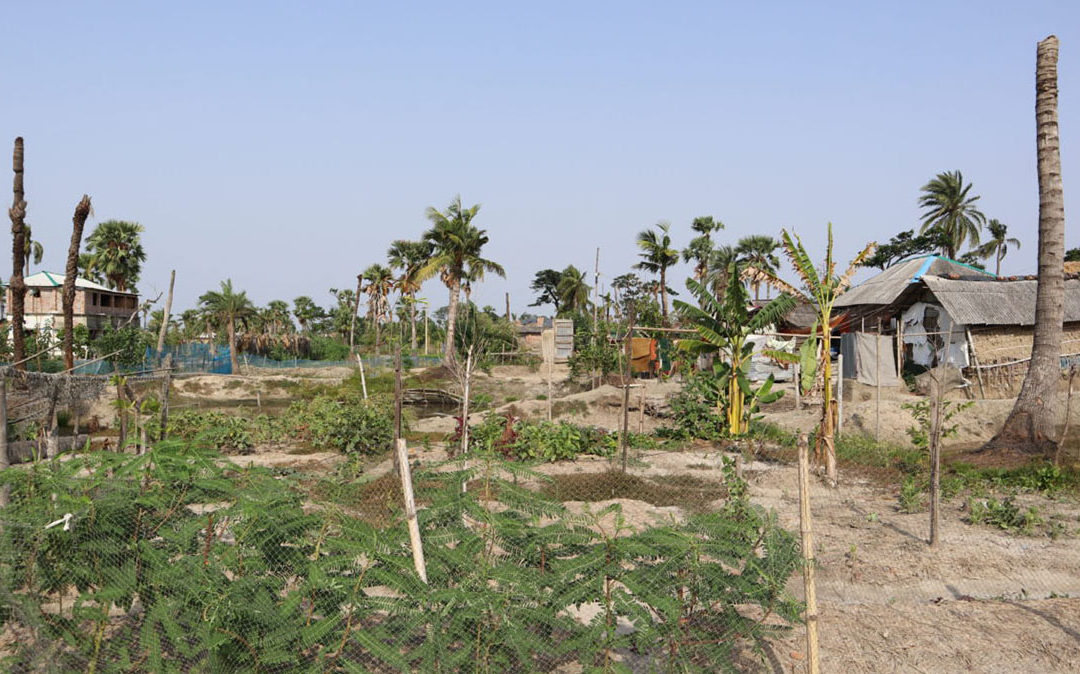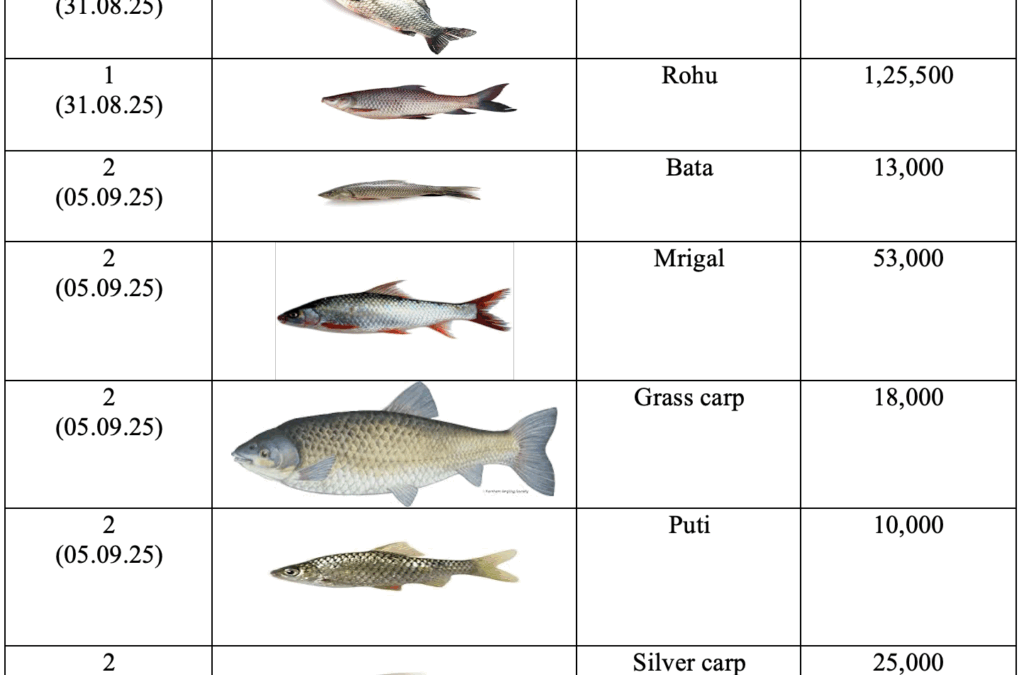
by Spriha Roy | Oct 13, 2025 | Blog, Inland Fisheries
Of Fish and Futures: A Grand Beginning through Re/lease
Blog by Spriha Roy, IIT Kharagpur. Spriha.roy24@gmail.com
On the 31st of August and the 5th of September 2025, the Mukherjee Canal in Kumirmari, an island situated in Gosaba block of the Indian Sundarbans, came alive with a vibrant community activity that focussed on ecological renewal. Spearheaded by the Sarsa Group—a collective comprising 41 households residing along the canal, the activity signified a milestone in the ongoing Collectivised Canal Fishing Experimentation (CCFE) initiative under the ENGAGE4Sundarbans project.
This two-phase release of fish fingerlings, conducted under the guidance of a transdisciplinary Indian team comprising academic researchers, local field implementation partners, advisory committee members, and technical experts from the Central Inland Fisheries Research Institute (CIFRI), brought together diverse forms of knowledge—scientific, traditional, and shared. As the fingerlings were gently introduced into the canal, the act of re/leasing became both a material and a symbolic gesture: of reinhabiting ecologies, of reimagining collective futures, and of reaffirming community-led management over shared aquatic commons.
This photo essay attempts to document not only the technical interventions in collectivised inland fishing, but also tries to highlight the deeply embodied place-based nuances of inter-generational knowledge systems, sustainable practices and hope. The images capture the multi-sensory textures of the occasion: the muddy feet and monsoon skies, the choreography of coordinated human chain carrying the boxes to the rhythms of dhak and conch shells, and systematically releasing the fingerlings to the canal.
Behind the Scenes of Planning and Logistics
The fingerling release was preceded by intensive planning involving the project team, local community members, and technical experts. Multiple consultations were held to determine ecologically appropriate methods for releasing during both phases of the activity. Fingerlings were procured from a certified vendor in Naihati, North 24 Parganas, West Bengal, and was transported in oxygenated plastic bags. The consignment included approximately 285,500 fingerlings distributed across seven species: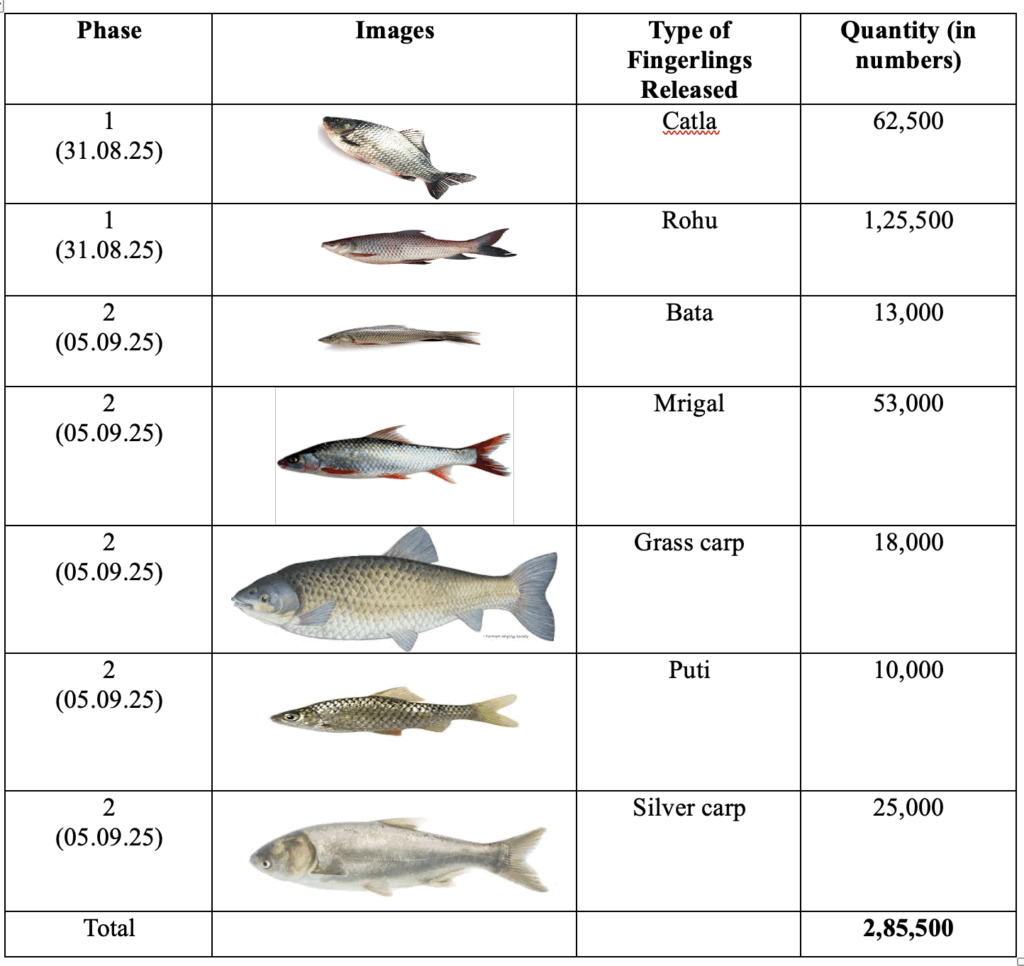
Each fingerling measured between 0.75-0.90 inches and weighed about 0.3 grams. The operation was coordinated under the supervision of a CIFRI principal scientist, in collaboration with the IIT Kharagpur team. After reaching Dhamakhali, the consignment was transferred to a boat and transported to Sucharita Sangha Ghat (Bonbibi Tala) in Kumirmari, the nearest access point to the Mukherjee Canal.
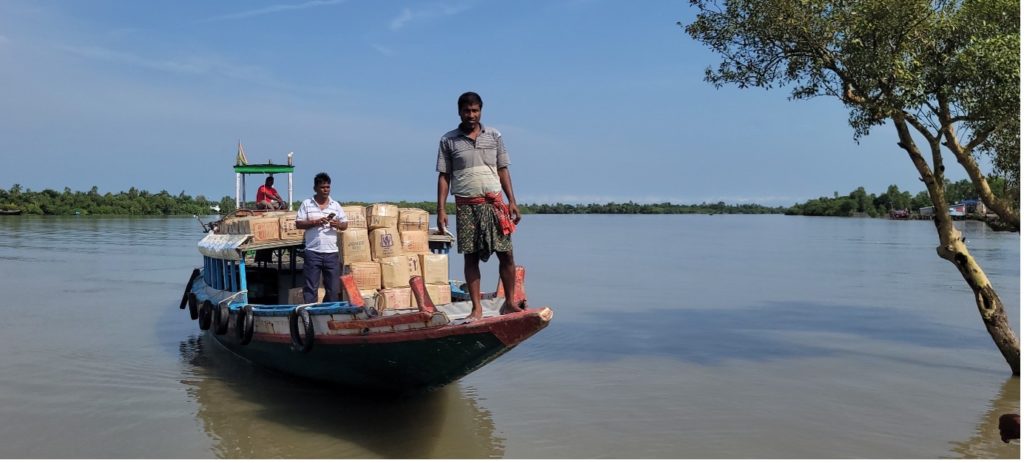
Image 1. Boat loaded with boxes of fingerlings brought to Sucharita Sangha Ghat in Kumirmari.
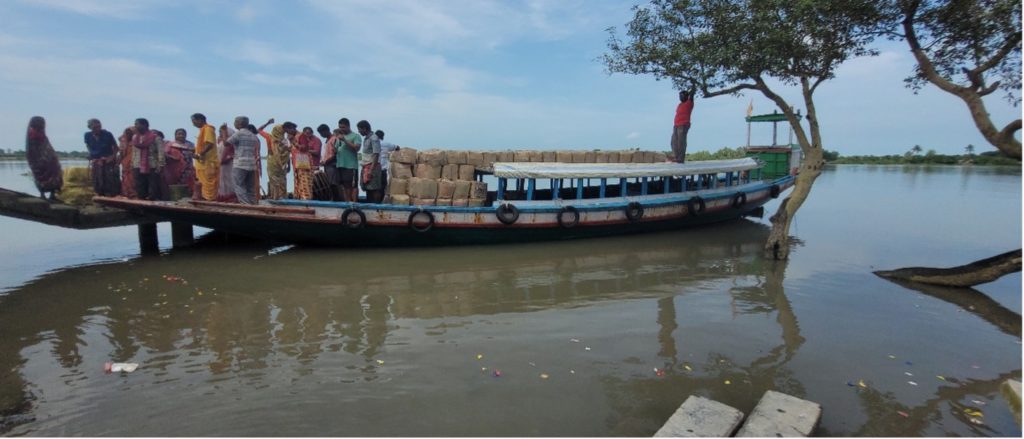
Image 2. Sarsa members welcoming the boat with great enthusiasm!
Rituals of Invocation
As the consignment of fingerlings reached Sucharita Sangha Ghat, the community gathered to celebrate this moment with traditional ritual of Makal and Ganga puja. Accompanied by the rhythmic beat of dhaks (traditional drums) and echoing vibrations of ullu and conch shells, members of the Sarsa Group offered prayers to invoke the blessings of the river. This act of reverence emphasises the culturally embedded symbolism of water in the community—as both a life-sustaining presence and a sacred force. Such traditional interventions serve as a medium between the perceived scientific practice and the unseen beliefs.
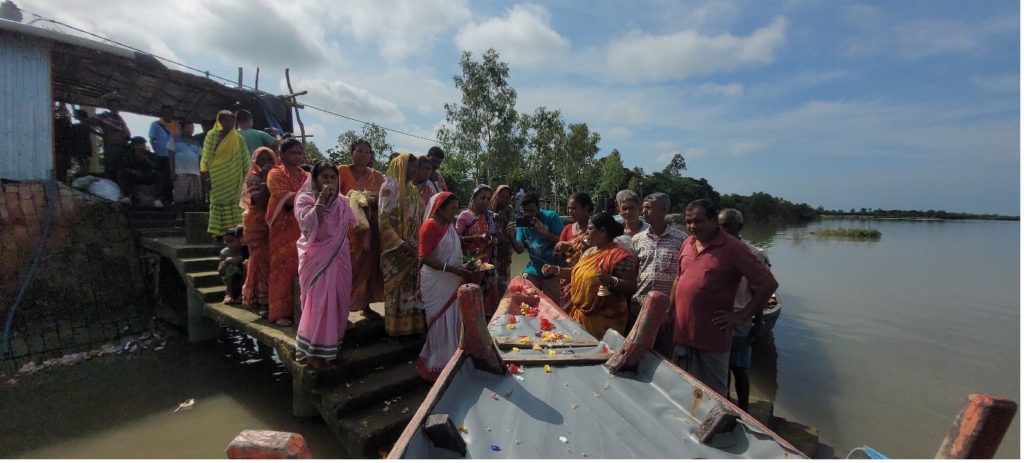
Image 3. Community members performing traditional rituals before the fish release.
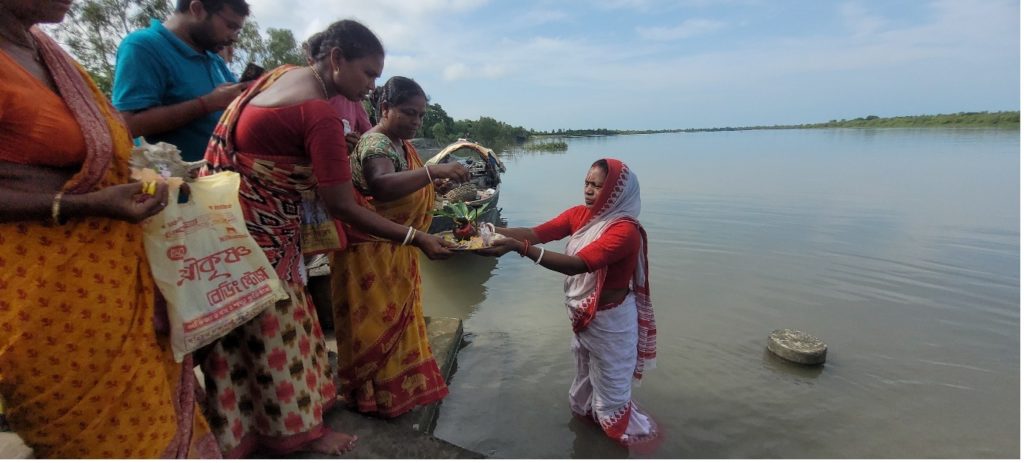
Image 4. A member of the Sarsa group performing Ganga Puja.
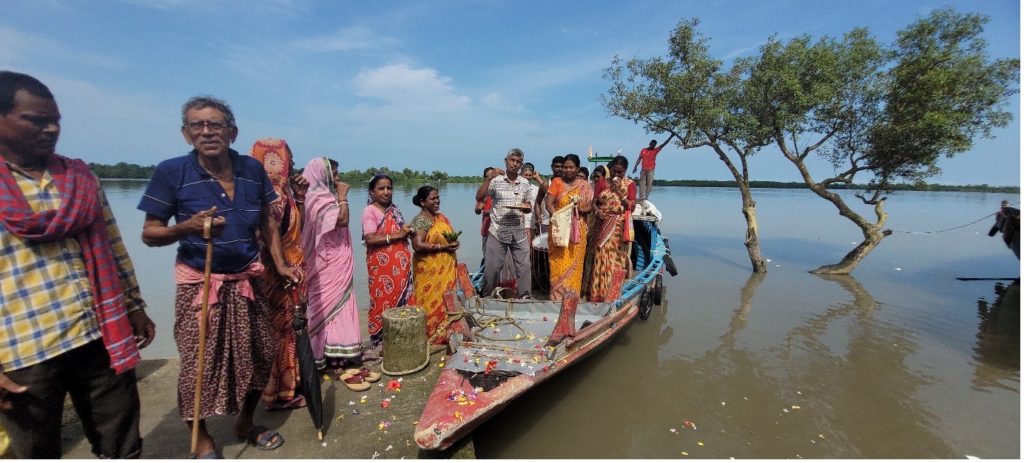
Image 5. A collective comprising intergenerational participation and a commitment to sustaining the canal as a community-managed resource.
Collective Mobilisation through Human Chain
Following the offering rituals, community members formed a human chain to transport oxygenated boxes of fingerlings from the ghat to the canal’s edge. Navigating muddy terrain and narrow paths, this coordinated effort reflected both logistical precision and a shared sense of responsibility. The act of carrying became more than a practical task as it reflected collective effort in sustaining their canal ecosystem.
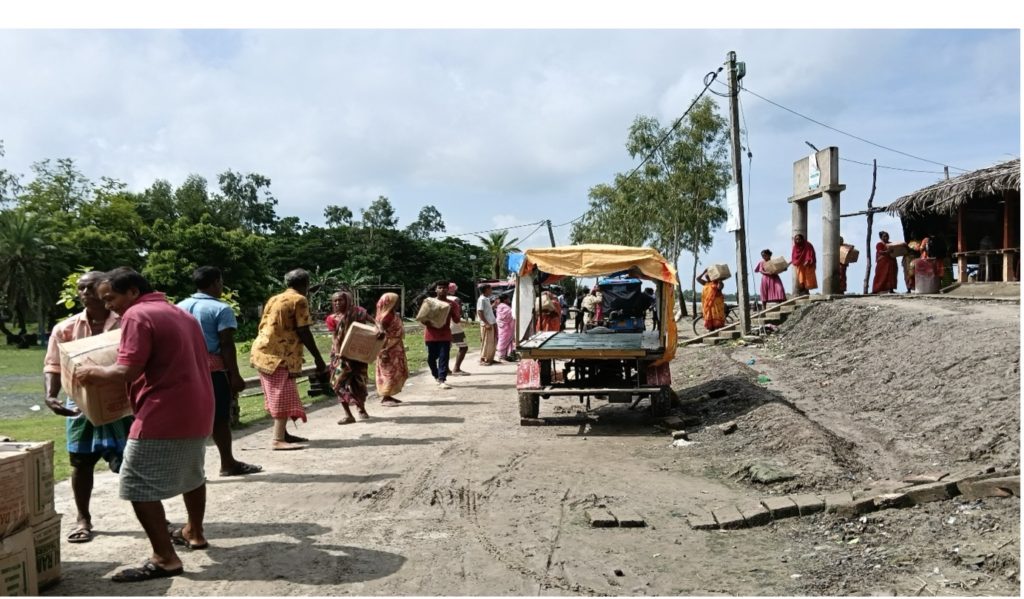
Image 6. Members of the Sarsa group carrying fingerling boxes from the ghat to the canal through a coordinated human chain.
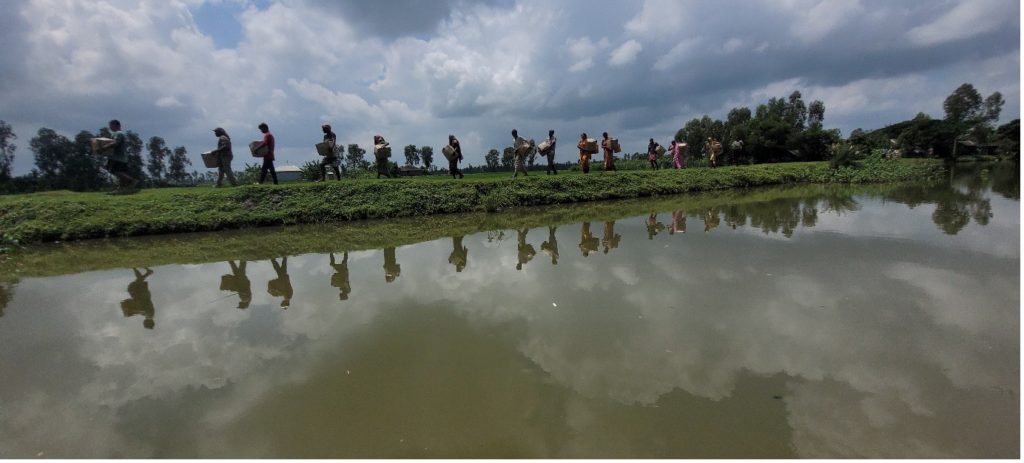
Image 7. The members are walking across the Mukherjee canal with the boxes.
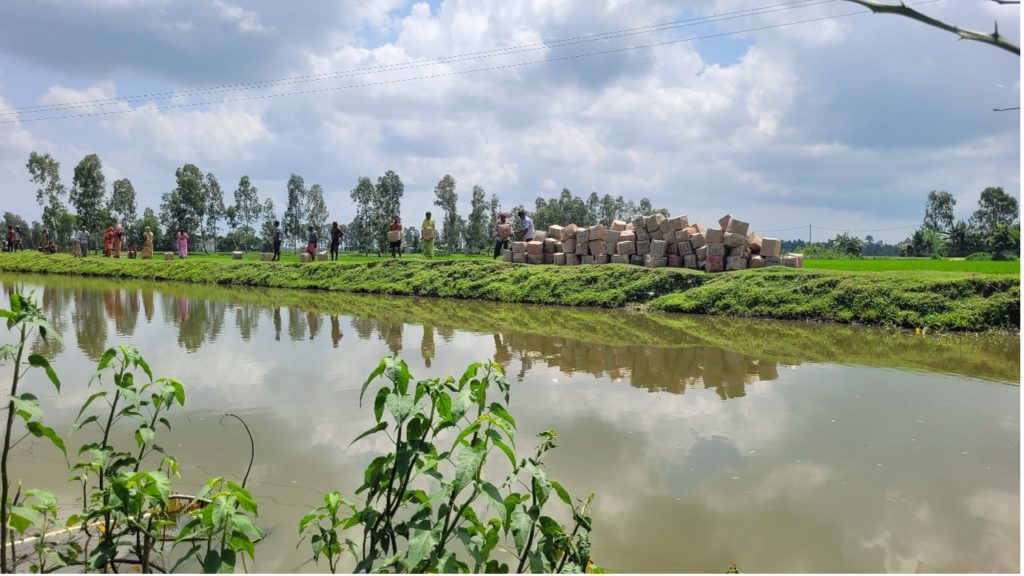
Image 8. Stacking the boxes at the end of the canal before the release.
Fingerlings Releasing Protocol
The release process followed standardised acclimatisation protocols to minimise stress and improve post-release survival. As per guidance from Dr. Archan Kumar Das, Principal Scientist at CIFRI, the oxygenated plastic bags, also referred to as fingerling balloons—were placed on the surface of the canal water, allowing them to float for approximately 15 minutes to achieve thermal equilibrium.
To further reduce stress on the sensitive fingerlings, about 100 ml of canal water (roughly one mug) was carefully added to each bag to initiate gradual acclimatisation. Once the fingerlings exhibited active movement, they were gently released at the canal’s edge, minimising shock and dispersal stress. This carefully managed process reflects a synthesis of technical precision and ecological care, integral to the broader aims of the Collectivised Canal Fishing Experimentation (CCFE).
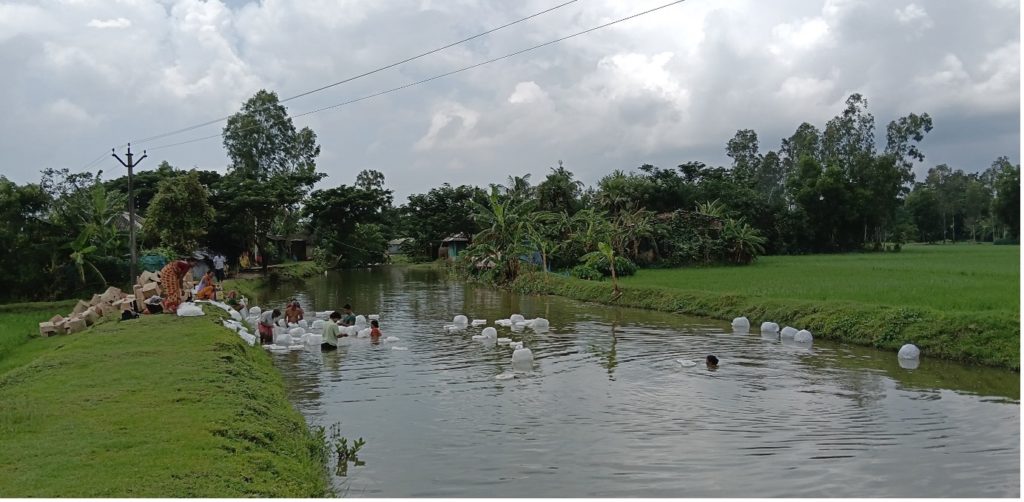
Image 9. Floating fingerling balloons.
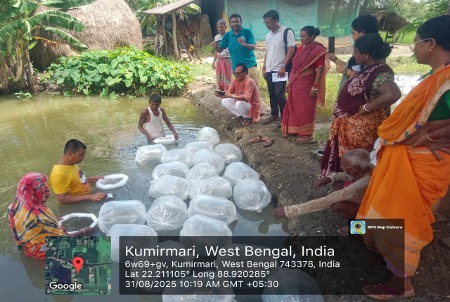
Image 10. Gradually adding 100ml canal water to each of the fingerling balloon.
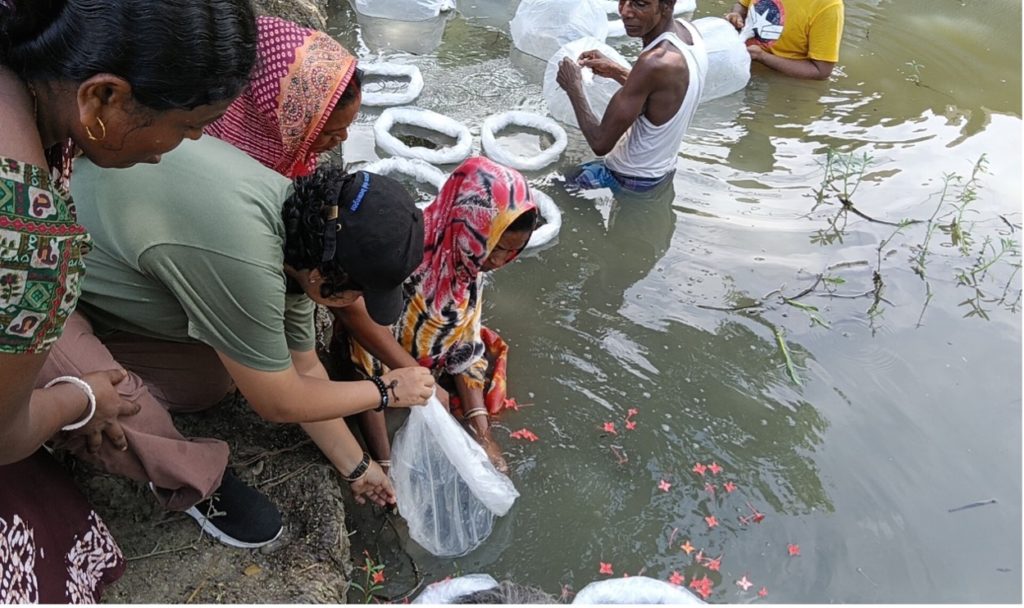
Image 11. Releasing fish fingerlings in the canal.
More than the Re/lease: Reflections on Practice, People and Place
While the activity unfolded and began to gather momentum, an elderly man stood at a distance, observing the process attentively. When approached, he shared, “Though I am not a member of this collective, I am aware of the community initiative taking place, and I feel happy for my neighbours. My son works as a migrant labourer, and I run a small shop near the ghat. My earnings are sufficient, and I am able to manage. But this activity will help others to find ways for living.” His words mirrored not only a sense of solidarity, but also an acute awareness of the broader socio-economic impact this experiment promises to offer.
Among the Sarsa team members, one elderly participant stood out for his remarkable energy and commitment. Despite his age, he actively assisted in unwrapping the boxes with a level of stamina comparable to that of younger volunteers. When asked about his age, he responded, “I am 70 years old, and the first house in this lane belongs to me. Since my son is currently away for work, I am here to take his place. I may not be equipped to carry out the more complex procedures, but I can certainly help with unboxing the cardboard packages.” Such reflections are deeply meaningful in understanding the fundamental idea that no contribution is insignificant. His involvement, though modest in scope, played a vital role in supporting the overall coordination and success of fingerlings release event, highlighting the importance of inclusive community participation across generations.

by emilie.cremin@gmail.com | Oct 10, 2024 | Integrated Farming, Resources
Integrated Farming: agriculture-aquaculture
In coastal Bangladesh, Agriculture is disrupted by salinity intrusion, tidal surges, poor soil health, water unavailability, cyclones and other climate change-induced disasters. Fragmented land, poor infrastructure, inefficient irrigation and policy failure further hinder agriculture. In Sundarbans areas where subsistence farming is still the main source of livelihood for millions of people, reduced agriculture and loss in production pushes people further to the poverty line, and subsequently to migrate.
Collaborating with ULAB, the SAJIDA Foundation is currently researching the efficacy and effectiveness of introducing climate-resilient integrated farming in Assasuni Upazila with the agenda of empowering communities with sustainable livelihoods. The team has developed a prototype design to initiate and provide technical support to community-based integrated farming by targeting several selected households in the union.
By consulting local communities and through planned and systematic activities such as procurement and distribution of fish fingerlings, feed, fertilizers and seeds, rainwater harvesting and storage provisions through the (re)excavation of private and cooperative ponds, the experimentation is co-designed with rudimentary rounds of pilot testing.
Through this method, farmers use stored rainwater to irrigate dry season crops (known as rabi crops in the local dialect, such as boro rice variety, other commercial crops, etc.). The ULAB-SAJIDA collaboration is anchored to systematically train and support villagers in the use of good quality salt-tolerant seed varieties involving government officials from the departments of fisheries and agriculture to revive traditional community knowledge and adaptive practices. The multiple benefits offered by integrated farming through coproduced knowledge and actions include the reduction of salinity of the topsoil, making it more durable to the unpredictable and repeated shocks of climate change in the region.



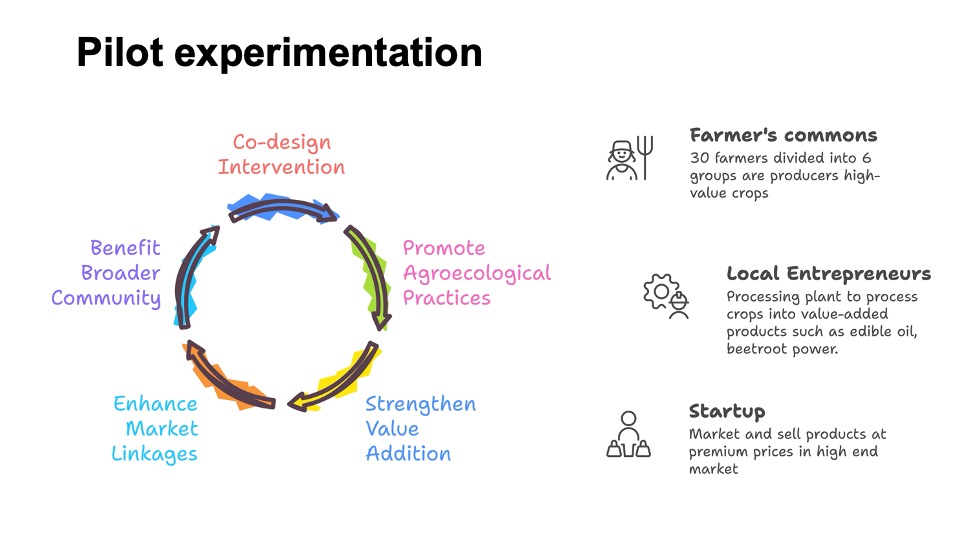
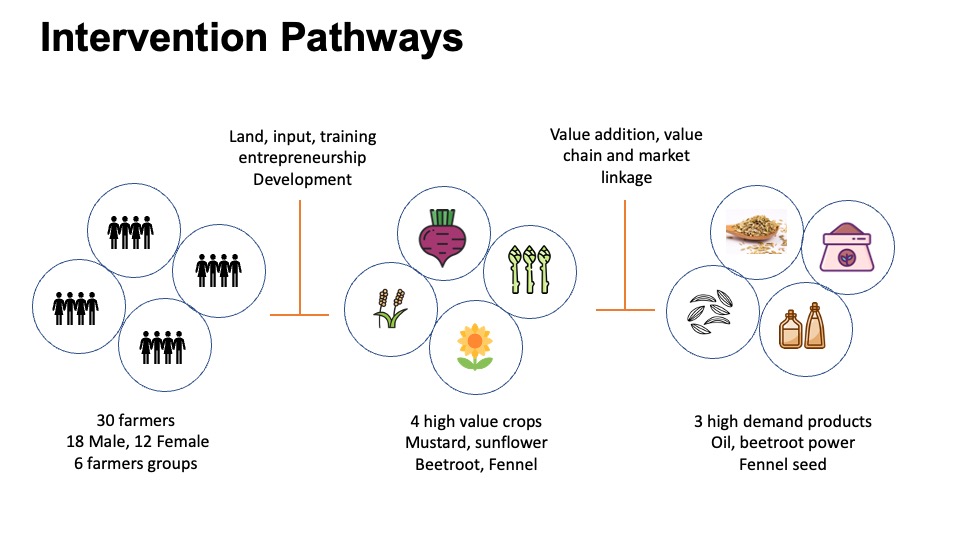
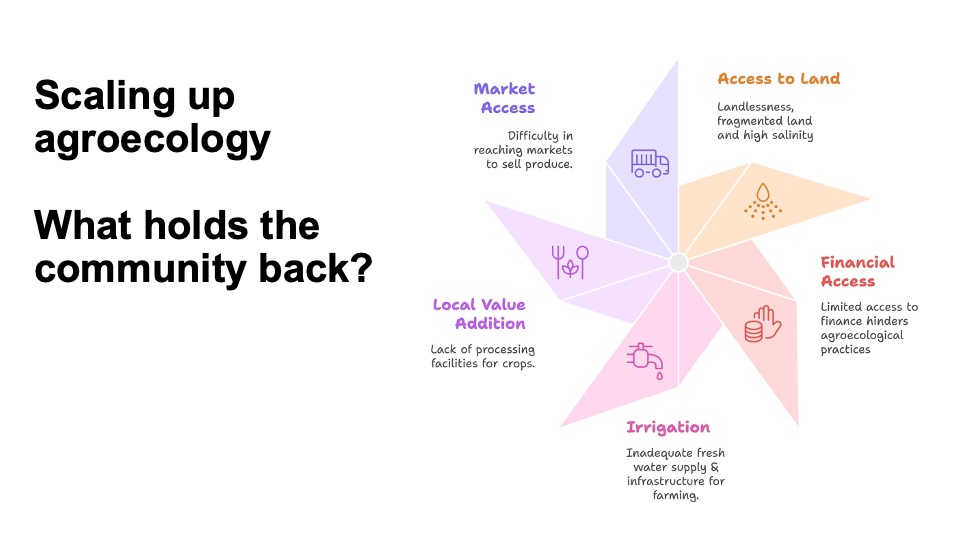
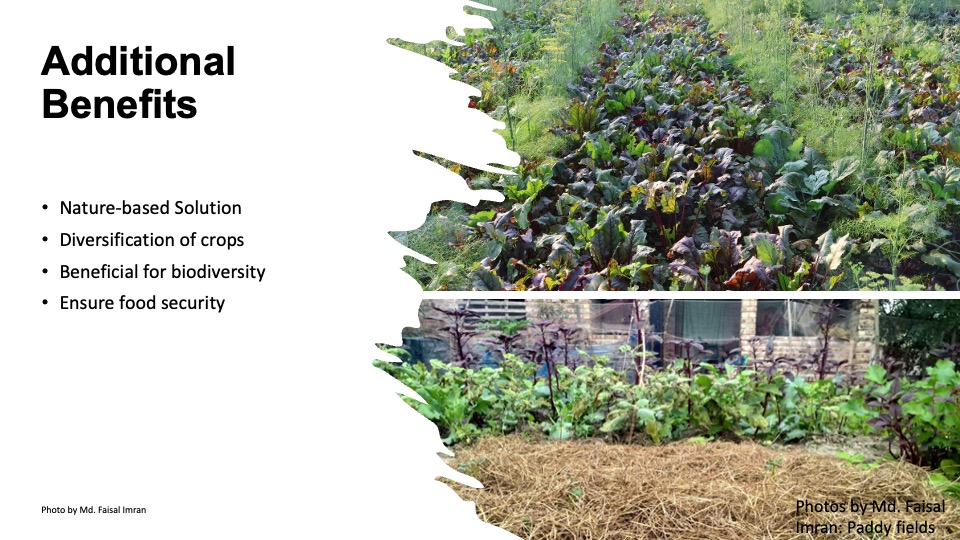
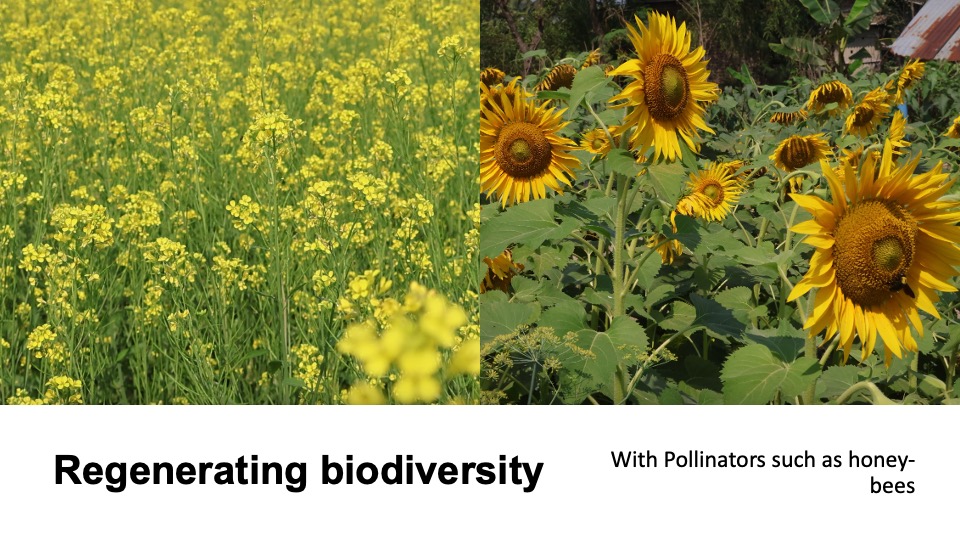
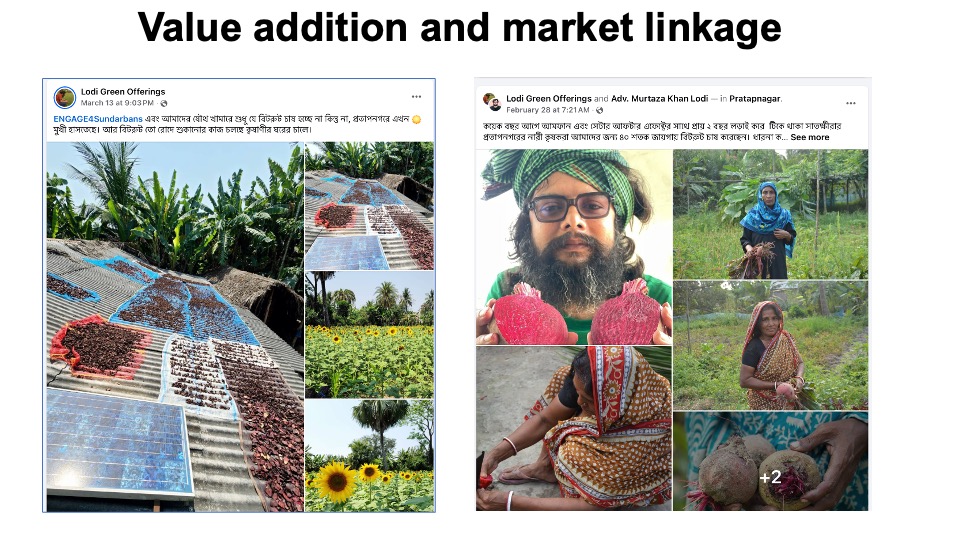
by emilie.cremin@gmail.com | Mar 14, 2024 | Porjects, Uncategorized
MoU 2011 on Transboundary Sundarbans: action-oriented roadmap for ENGAGE
Overview: On September 6, 2011, a Memorandum of Understanding (MoU) was signed between the governments of India and Bangladesh, countries that share the common social ecological landscape of the Sundarbans delta. The MoU was entrusted to the respective ministries of Environment, Forest and Climate Change in the two countries, calling for an adoption of joint management and common principles of conservation. To oversee the MoU’s implementation, a Joint Working Group was established. As a part of the consortium, the Bangladesh-India Sundarban Region Cooperation Initiative (BISRCI) was undertaken in June 2015, to implement a ‘knowledge-based advocacy’, facilitating and supporting effective bilateral cooperation in the region. BISRCI brought together research associations, civil society organizations, think tanks, key members of the strategic community from two countries in order to deliberate on enhancing further cooperation for formation of cross-sectoral platform that will provide actionable plans for management of the delta as well as boost bilateral coordination on Sundarbans.
SOR4D-ENGAGE, a transdisciplinary consortium of three country teams (India, Bangladesh and Switzerland), is motivated to conduct and pursue participatory action research in the transboundary delta with a shared set of objectives and motivation. The project brings together primarily social science researchers, practitioners and user groups, who have long-term experiences on working in delta. The exploratory as well as accommodative approach of the research allows it to deploy archival and ethnographic methods to meticulously explore, map and highlight the physical, political, ecological and social factors mutually operating and driving changes in the transboundary Sundarbans. Through the coupled methodology, a pluri-dimensional realities that have been felt with physical attributes, social demography (migration, assets, livelihoods, gender) and political economy (regulation acts, arrangements, apparatuses, conservation and impacts) in two sides of the common delta, will be sketched, compared and assessed.
ENGAGE acknowledges the MoU as a vital policy template that strategizes mainstream conservation and management of the Sundarbans. Here, we critically read and review MoU articles to understand their current status (from secondary literature) and map the impediments and imperatives to effectuate the provisions, induced by nuanced ‘grounded’ analytics and empirics towards crafting socially resilient trajectories in and for the transboundary delta.
[Note: There are eight articles in the MoU template and among them, three articles (II, III, V) are directly related to the vision and plans of ENGAGE]
|
Article II |
Both Parties, with a view to exploiting the potential of the Sundarbans for development and alleviation of poverty, agree to undertake, but not limited to, the following endeavours: a) consider and adopt appropriate joint management and joint monitoring of resources; b) explore the possibility of implementing conservation and protection efforts, encourage mangrove regeneration, habitat restoration and rehabilitation programs, which would eventually increase the potential for carbon sequestration; c) develop a long term strategy for creating ecotourism opportunities for both countries, which will create synergy and generate greater revenue.
|
| Specific provision |
Current status |
Envisioning ENGAGEment (SOR4D plans and visions) |
| Joint management and monitoring of resources
|
Fragmented, non-systematic and sporadic
|
Ø ENGAGE critically interrogates the mainstream conservation-management-monitoring framework and instead, conforms to the theoretical context of ‘social resilience’. |
| Habitat conservation, mangrove regeneration, habitat restoration and rehabilitation
|
Confined to the protection of designated species and spaces
Climate change impacts are not taken into account
|
Ø The ‘social resilience’ approach and agenda, undertaken by the project, advocates ‘staying’ in the delta pitted against technocratic managed retreat and rehabilitation plans.
Ø ENGAGE is anchored to compile and collate place-based, plural perspectives on climate change-induced risks and resilience to offer solution-oriented ‘pervasive and persuasive pathways’, activating an inclusive governance framework. |
| Ecotourism opportunities
|
Specific needs and priorities need to be identified |
Ø We envision participatory, community-agency based ‘eco-educational tourism’ to simultaneously ensure local socio-economic viability, knowledge exchange and augmentation of research practices (practical-empirical-implementation laboratory attracting field schools and propagating ideas on Environmental Humanities) in the site, rather than following a conventional path that is mostly attracted by business models of outside practitioners or organizations. |
|
Article III |
The Parties are in agreement that the Sundarban ecosystem is greatly influenced by human use and the human beings living around the Sundarban. The Parties will map and delineate these human settlements on respective sides so that a better understanding emerges of the relationship between human settlements and the ecosystems. The Parties will further develop a management plan that utilizes this information to address issues of livelihood, deprivation by flooding and other climate related disasters, man-animal conflict, pollution, resource depletion, etc. The Parties will through the management plan, also identify opportunities for livelihood generation that do not adversely affect the Sundarban ecosystem. |
| Specific provision |
Current status |
Envisioning ENGAGEment (SOR4D plans and visions) |
| Map and delineate human settlements on respective sides
|
Local-level management plans exist but, they are not transformational
|
Ø A detailed exploration and nuanced analyses of multiple interconnected risks, imbricated in the socio-cultural and political-ecological attributes of the region, will pave the way through which ‘situated adaptive practices’ could be collectively identified, mapped and classified.
Ø We would rather be emphasising (trans)local stories of transformation, facilitating knowledge sharing and actions, and envisioning systematic ‘scaling up’ and ‘scaling out’ approaches. |
|
Develop management plans for:
i. Livelihood improvement
ii. Disaster management |
Needs to promote the development of cooperation in fisheries, aquaculture and allied activities between the two countries
Disaster management plans do not include recovery |
Ø Co-identification and co-adoption of solution-focused pilot intervention plan for experimentation on small-scale inland fishing and integrated farming in the translocal project sites.
Ø The project’s impact on knowledge co-creation and livelihoods of stakeholders will be felt in forms of economic stability; socio-cultural belongingness and cohesion; gender empowerment, and improved ecosystem functioning through rejuvenatory practices.
Ø The project’s inclusive approach will allow it to create a comprehensive, practice-oriented knowledge base and facilitate policy outcomes (training guides, knowledge products, digital platforms hosted in policy network) on disaster risk mitigation mechanisms and climate-resilient, gender-neutral livelihood strategies. |
| Article V |
Both Parties will carry out research to develop a common and shared understanding of the impacts of climate change along with adaptation strategies that can be implemented. |
| Specific provision |
Current status |
Envisioning ENGAGEment (SOR4D plans and visions) |
| Develop a common and shared understanding of the impacts of climate change
|
Site-specific knowledge of climate change impacts exists |
Ø By engaging partnerships among and perceptions of multiple groups of actors (academia, development practitioners, policy makers and local communities) across transboundary, transdisciplinary and within translocal contexts, the ENGAGE platform will bring to the fore prominent drivers of climate change, its varied implications and adaptation ‘tactics’ by communities in the delta. |
| Design implementable adaptation strategies |
Small-scale projects have been undertaken without addressing ‘adaptation’
|
Ø The plural understandings of disaster-induced risks and co-mapping of livelihood as well as adaptive practices, will be mobilized, used and shared through local and regional platforms (workshops, seminars, visual presentation, interactions etc.).
|























